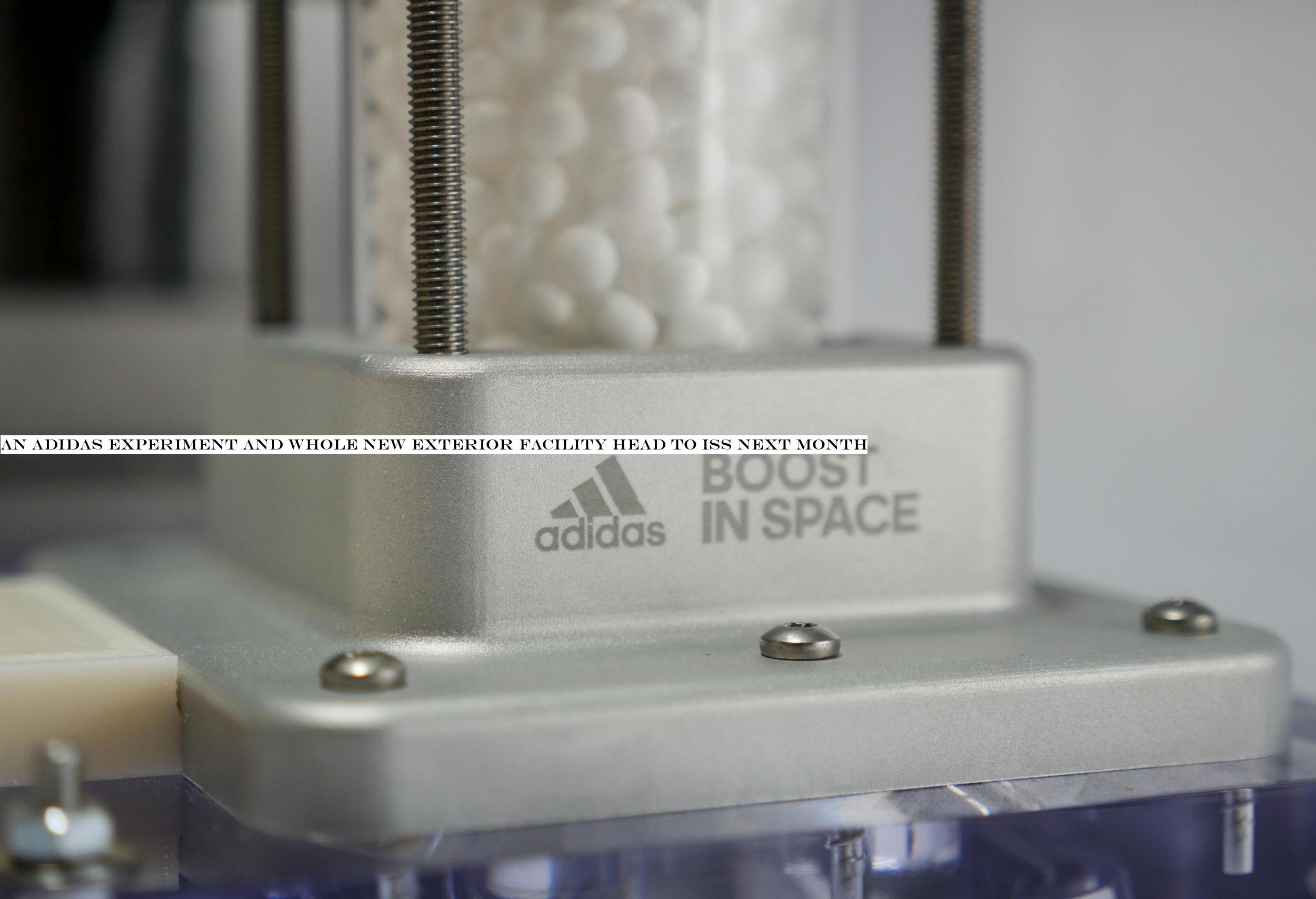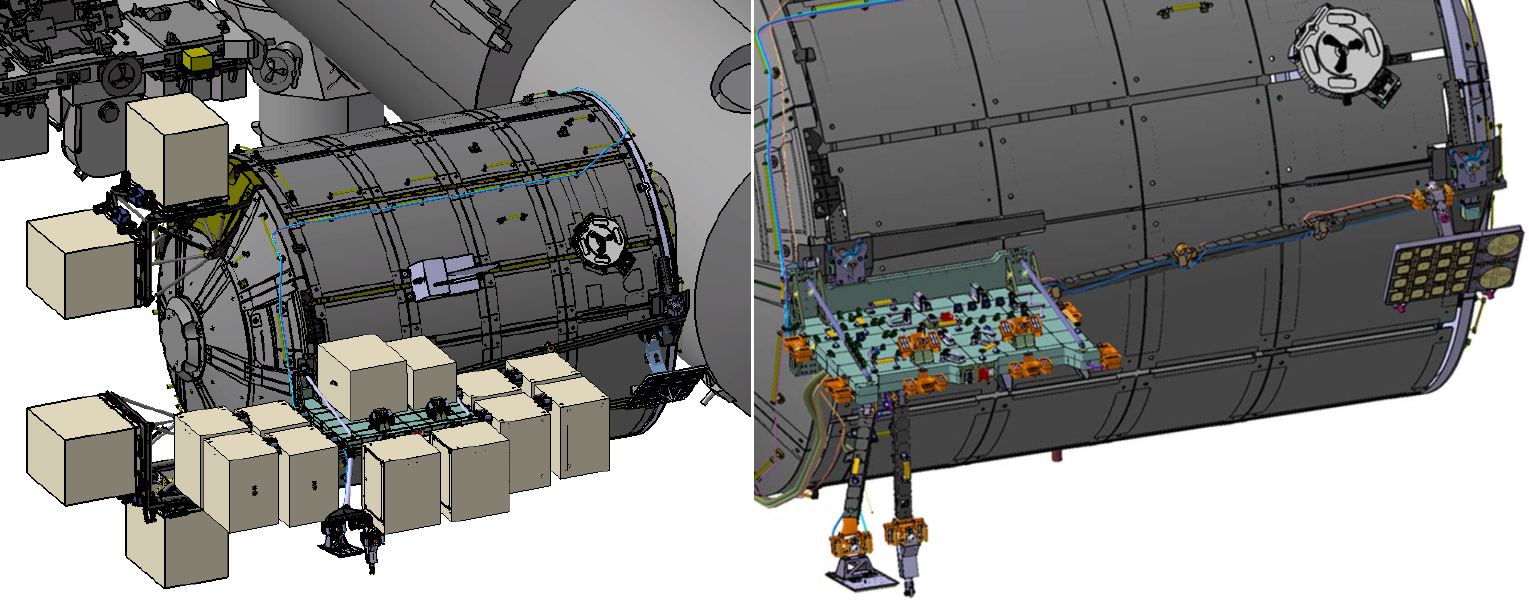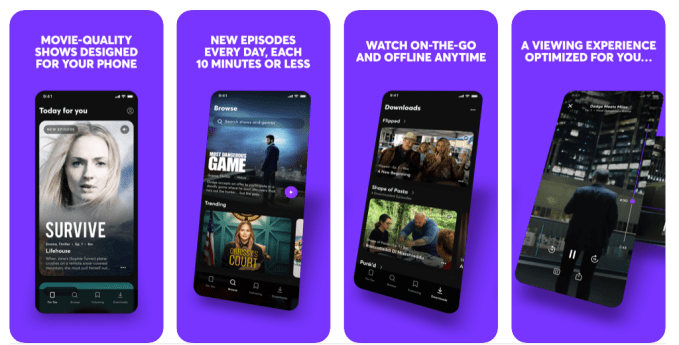Music
Trailers
DailyVideos
India
Pakistan
Afghanistan
Bangladesh
Srilanka
Nepal
Thailand
StockMarket
Business
Technology
Startup
Trending Videos
Coupons
Football
Search
Download App in Playstore
Download App
Best Collections
Technology

Several companies rolled out electric pickups in 2019. Tesla Cybertruck got most of the attention, but don&t sleep on General Motors and Ford — bringing electric pickups to market is critical for the viability of electric vehicles.
Automakers build vehicles around shared components. These platforms, the underpinnings of the vehicles, often live for 10 or more years, and are critical to each automakereconomic stability. The exterior sheet metal might change, but dozens of models often share the frame, powertrain and electrical components.
Electric pickup platforms offer vehicle makers a new revenue source. Instead of building electric vehicles designed to move people, these platforms can move goods. Thatkey to building a long-term strategy around electric vehicles.
Look at Ford, whose best-selling F-150 is just a portion of its success. From the F-150, the automaker has dozens of commercial vehicles built off platforms that share components. If Ford can produce an electric pickup — which it says itdoing alongside startup Rivian — Ford will be able to electrify its commercial offering more quickly.
Specific vehicle platforms are perfect for electrification. Vehicles with a predictable driving route like municipal vehicles, delivery vans and even hearses could benefit from electric powertrains.
Electric powertrains have long offered advantages over internal combustion; electric counterparts feature fewer moving parts and are now often smaller, allowing for more interior space. And then therethe torque that gives electric vehicles near-superhero strength.
- Details
- Category: Technology Today
Read more: The debut of electric pickups signals a new EV era
Write comment (94 Comments)March 2 is the planned launch date for SpaceX 20th ISS resupply mission, which is bringing the usual supplies and goodies, plus a payload of interesting experiments from partners and paying customers. And a big expansion to EuropeColumbus Module.
The most ridiculous has to be Adidas&BOOST in Space& effort. The company creates its midsoles by fusing together thousands of tiny foam spheres. But sadly, this is generally done on Earth, where theregravity. So of course they want to try it in space to see what they can learn.

&Microgravity enables a closer look at the factors behind pellet motion and location, which could enhance manufacturing processes as well as product performance and comfort,& the project description reads. It also makes for a great stunt. The revelations from this toaster-sized device will surely lead to better shoes.
Itfunny, but as always with these commercial operations, itpretty cool that itpossible to just decide to do some experimenting in the ISS.
Microgravity is a sought-after condition, and several of the other research projects going up rely on it as well. Another commercial operation is from Delta, the faucet maker, which thinks it might be able to learn something about droplet formation and create more efficient showers and such.

Gut tissue isn&t normally this blue, but thatnot an effect of microgravity.
Emulate is sending up an organ-on-a-chip, intestinal tissue to be precise, which it hopes will help teach us &how microgravity and other potential space travel stressors affect intestine immune cells and susceptibility to infection.& They&re also testing the growth of heart tissue from stem cells up there, which could come in handy on long voyages.
The biggest payload, though, has to be Bartolomeo, a new exterior platform that will attach to the European Columbus Module:

With payloads attached, left, and without, right. Therea boom that sticks out for other purposes.
It has 12 sites onto which can be attached payloads from commercial and institutional partners — anyone from universities to companies that need access to the exterior of the space station for one reason or another. Earth imagery, vacuum exposure, radiation testing, whatever you like. You can read about the specifications here.
The launch is set for March 2 if all goes well — we&ll post the live stream and any other updates closer to T-0.
- Details
- Category: Technology Today
Read more: An Adidas experiment and whole new exterior facility head to ISS next month
Write comment (93 Comments)
Got your sights set on attending TC Sessions: Mobility 2020 on May 14 in San Jose? Spend the day with 1,000 or more like-minded founders, makers and leaders across the startup ecosystem. Ita day-long deep dive dedicated to current and evolving mobility and transportation tech. Think autonomous vehicles, micromobility, AI-based mobility applications, battery tech and so much more.
Hold up. Don&t have a ticket yet? Buy your early-bird pass and save $100.
In addition to taking in all the great speakers (more added every week), presentations, workshops and demos, you&ll want to meet people and build the relationships that foster startup success. Get ready for a radical network experience with CrunchMatch. TechCrunchfree business-matching platform makes finding and connecting with the right people easier than ever. Itboth curated and automated, a potent combination that makes networking simple and productive. Hey needle, kiss that haystack goodbye.
Herehow it works.
When CrunchMatch launches, we&ll email all registered attendees. Create a profile, identify your role and list your specific criteria, goals and interests. Whomever you want to meet — investors, founders or engineers specializing in autonomous cars or ride-hailing apps. The CrunchMatch algorithm kicks into gear and suggests matches and, subject to your approval, proposes meeting times and sends meeting requests.
CrunchMatch benefits everyone — founders looking for developers, investors in search of hot prospects, founders looking for marketing help — the list is endless, and the tool is free.
You have one programming-packed day to soak up everything this conference offers. Start strategizing now to make the most of your valuable time. CrunchMatch will help you cut through the crowd and network efficiently so that you have time to learn about the latest tech innovations and still connect with people who can help you reach the next level.
TC Sessions: Mobility 2020 takes place on May 14 in San Jose, Calif. Join, meet and learn from the industrymightiest minds, makers, innovators and investors. And let CrunchMatch make your time there much easier and more productive. Buy your early-bird ticket, and we&ll see you in San Jose!
Is your company interested in sponsoring or exhibiting at TC Sessions: Mobility 2020? Contact our sponsorship sales team byfilling out this form.
- Details
- Category: Technology Today
Read more: Network with CrunchMatch at TC Sessions: Mobility 2020
Write comment (94 Comments)
During the days when Snapchatpopularity was booming, investors thought the company would become the anchor for a new Los Angeles technology scene.
Snapchat, they hoped, would spin-off entrepreneurs and angel investors who would reinvest in the local ecosystem and create new companies that would in turn foster more wealth, establishing LA as a hub for tech talent and venture dollars on par with New York and Boston.
In the ensuing years, Los Angeles and its entrepreneurial talent pool has captured more attention from local and national investors, but itnot Snap thatbeen the source for the next generation of local founders. Instead, several former SpaceX employees have launched a raft of new companies, capturing the imagination and dollars of some of the biggest names in venture capital.
&There was a buzz, but it doesn&t quite have the depth of bench of people that investors wanted it to become,& says one longtime VC based in the City of Angels. &It was a company in LA more than it was an LA company.&
Perhaps the most successful SpaceX offshoot is Relativity Space, founded by Jordan Noone and Tim Ellis. Since Noone, a former SpaceX engineer, and Ellis, a former Blue Origin engineer, founded their company, the business has been (forgive the expression) a rocket ship. Over the past four years, Relativity href="https://techcrunch.com/2019/10/01/relativity-a-new-star-in-the-space-race-raises-160-million-for-its-3-d-printed-rockets/"> has raised $185.7 million, received special dispensations from NASA to test its rockets at a facility in Alabama, will launch vehicles from Cape Canaveral and has signed up an early customer in Momentus, which provides satellite tug services in orbit.
- Details
- Category: Technology Today
Read more: SpaceX alumni are helping build LA’s startup ecosystem
Write comment (98 Comments)Yesterday, Samsung announced that the Galaxy Flip Z sold out online. What, precisely, that means, is hard to say, of course, without specific numbers from the company. But itprobably enough to make the company bullish about its latest wade into the foldable waters, in the wake of last yearFold — letjust say &troubles.&
Response to the device has been positive. I wrote mostly nice things about the Flip, with the caveat that the company only loaned out the product for 24 hours (I won&t complain here about heading into the city on a Saturday in 20-degree weather to return the device. I&m mostly not that petty).
Heck, the product even scored a (slightly) better score on iFixitrepairability meter than the Razr. Keep in mind, it got a 2/10 to Motorola1/10 (the lowest score), but in 2020, we&re all taking victories where we can get them.
Therebeen some negative coverage mixed in, as well, of course; iFixit noted that the Flip could have some potential long-term dusty problems due to its hinge, writing, &it seems like dust might be this phoneKryptonite.& Also, the $1,400 phonenew, improved folding glass has proven to be vulnerable to fingernails, of all things — a definite downside if you have, you know, fingers.
Reports of cracked screens have also begun to surface, owing, perhaps, to cold weather. Itstill hard to say how widespread these concerns are. Samsungsaving grace, however, could well be the Razr. First the device made it through a fraction of the folds of Samsungfirst-gen product. Then reviewers and users alike complained of a noisy fold mechanism and build quality that might be…lacking.
A review at Input had some major issues with a screen that appeared to fall apart at the seams (again, perhaps due to cold weather). Motorola went on the defensive, issuing the following statement:
We have full confidence in razrdisplay, and do not expect consumers to experience display peeling as a result of normal use. As part of its development process, razr underwent extreme temperature testing. As with any mobile phone, Motorola recommends not storing (e.g., in a car) your phone in temperatures below -4 degrees Fahrenheit and above 140 degrees Fahrenheit. If consumers experience device failure related to weather during normal use, and not as a result of abuse or misuse, it will be covered under our standard warranty.
Consensus among reviews is to wait. The Flip is certainly a strong indication that the category is heading in the right direction. And Samsung is licensing its folding glass technology, which should help competitors get a bit of a jump start and hopefully avoid some of the pitfalls of the first-gen Fold and Razr.
A new survey from PCMag shows that 82% of consumers don&t plan to purchase such a device, with things like snapping hinges, fragile screens and creases populating the list of concerns. Which, honestly, fair enough on all accounts.
The rush to get to market has surely done the category a disservice. Those who consider themselves early adopters are exactly the people who regularly read tech reviews, and widespread issues are likely enough to make many reconsider pulling the trigger on a $1,500-$2,000 device. Even early adopters are thrilled about the idea of beta testing for that much money.
Two steps forward, one step back, perhaps? Letcheck back in a generation or two from now and talk.
- Details
- Category: Technology Today
Read more: One year later, the future of foldables remains uncertain
Write comment (93 Comments)Quibi, the mobile-only streaming service from Jeffrey Katzenberg, is now open for pre-orders. The company declined to fully show off its app only a month ago during demos of its &TurnStyle& technology at the Consumer Electronics Show in Las Vegas, but it appears the app is ready nonetheless. Quibi is listed on both AppleApp Store and Google Play, where itbeen given a pre-order date of April 6, 2020 — the date Quibinew service goes live.
The app was actually published to the app stores in January, according to data from Sensor Tower and App Annie. Quibi confirmed the app actually opened up for pre-orders on January 30, but this hadn&t been reported yet by media. (Chrissy Teigen tweeted it, however.)

Apple first introduced pre-order functionality for apps and games in late 2017, allowing interested consumers to have a new app or game automatically download to their device on launch day. And in the case of paid apps, customers aren&t charged until the app becomes available.
Since launch, the pre-order system has largely been used with mobile games. Apple even devotes part of its iOS App Store to a &Coming Soon& section where you can find upcoming games for pre-order.
Itfar less common for non-games to utilize a pre-order system. By doing so, ita signal that the company plans to do a significant marketing push ahead of the apprelease, likely in hopes of achieving a higher number of day-one downloads than it would otherwise.
Thatimportant in Quibicase, given the competition that awaits it. Disney+, for example, blew past expectations to reach nearly 29 million subscribersin less than 3 months after its U.S. debut. Quibi, meanwhile, will arrive in the spring, just ahead of when WarnerMediaHBO Max and NBCUPeacock also begin rolling out. Quibi can&t wait until the market is even more crowded to start pushing users to download its app — it needs to capture users& attention now.

With Quibiapp store listings now live, we also have our first glimpse of the streaming serviceuser interface.
Much has been made about Quibipotential to reimagine TV by taking advantage of mobile technology in new ways, but the app itself looks much like any other streaming service, save for its last app store screenshot showing off its TurnStyle technology.
The app appears to favor a dark theme common to streaming apps, like Netflix and Prime Video, with just four main navigation buttons at the bottom.
The first is a personalized For You page, where you&re presented a feed where you&ll discover new things Quibi thinks you&ll like.
A Search tab will point you toward trending shows and it will allow you to search by show titles, genre or even mood.
The Following tab helps you keep track of your favorite shows and a Downloads tab keeps track of those you&ve made available for offline viewing.
Otherwise, Quibiinterface is fairly simple. Shows are displayed with big images that you flip through either vertically on your home feed or both horizontally and vertically as you move through the Browse section.
The company does promote its TurnStyle viewing technology in its app store description, though it doesn&t reference the technology by name. Instead, it describes it as a viewing experience that puts you in full control. &No matter how you hold your phone, everything is framed to fit your screen,& it says.
In vertical viewing mode, it also introduces controls that appear on either the left or right side the screen — you choose, based on whether you&re left or right-handed.
Quibi did not formally announce the app was open for pre-order.
The startup, founded by Jeffrey Katzenberg, is backed by more than a billion dollars — including a recently closed $400 million round.
Katzenberg explained at CES that every great innovation in Hollywood has been driven by new technology, but todaystreaming services haven&t fully capitalized on the way many people consume content — meaning, on their phone. Quibi plans to make its service mobile-first, with TurnStyle for better viewing. And later, by using the phoneother sensors and features to create different types of stories, like a horror show you can only watch at night or interactive fitness programs that can track your steps, among other things.
But Quibi could easily come across as gimmicky if it doesn&t get the experience right with quality content, too. Even if Quibi doesn&t pan out as a standalone streamer, it could license its TurnStyle tech to others in the streaming space — that would make Quibi one of the most expensive demo apps of all time.
Updated 2/20/20, 6 PM ET to clarify the app was opened to pre-orders on Jan 30, according to Quibi, but it wasn&t publicly announced. Sensor Tower had earlier said the app was only made available for pre-order today. The app was updated today, however.
- Details
- Category: Technology Today
Read more: Quibi’s streaming service app launches in app stores for pre-order
Write comment (91 Comments)Page 1394 of 1396

 18
18




